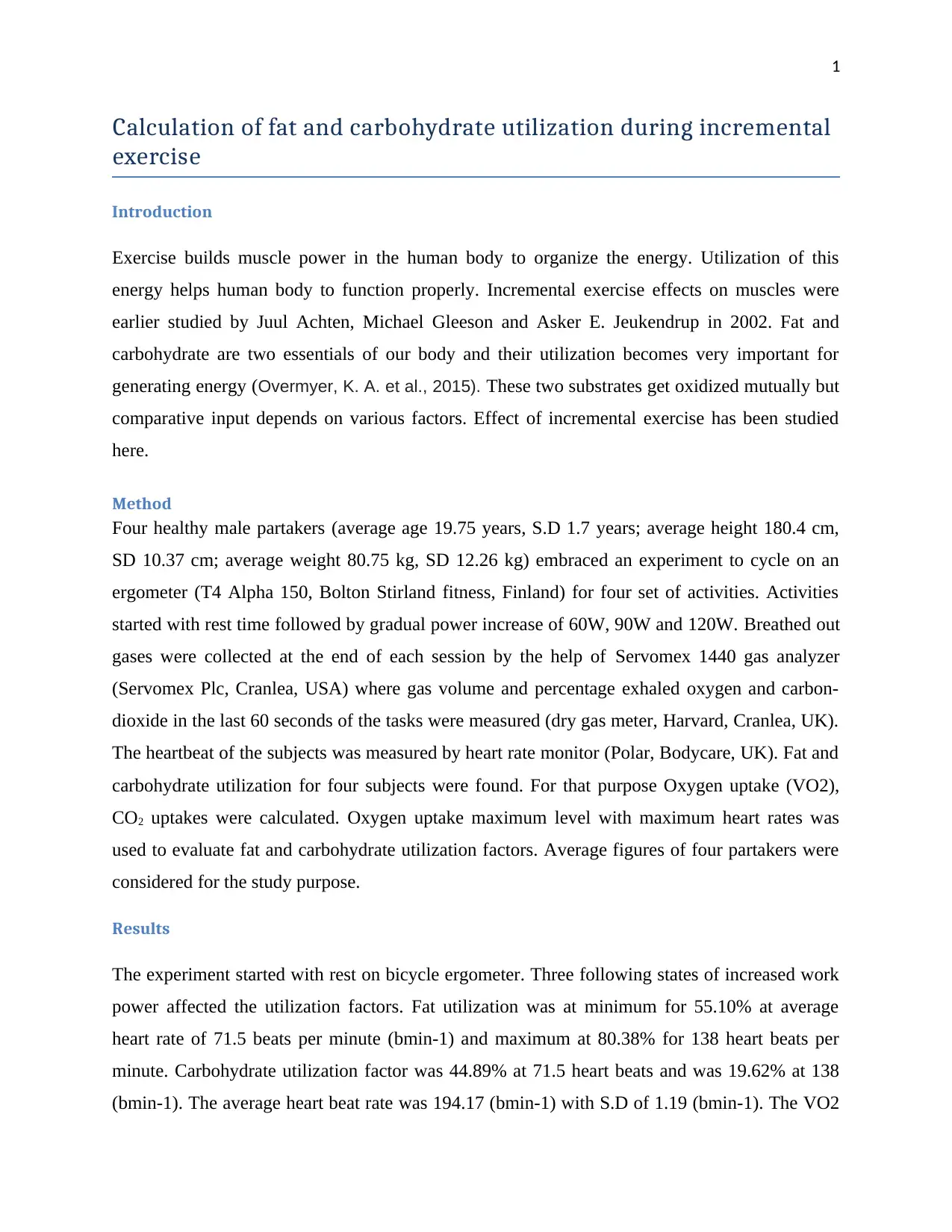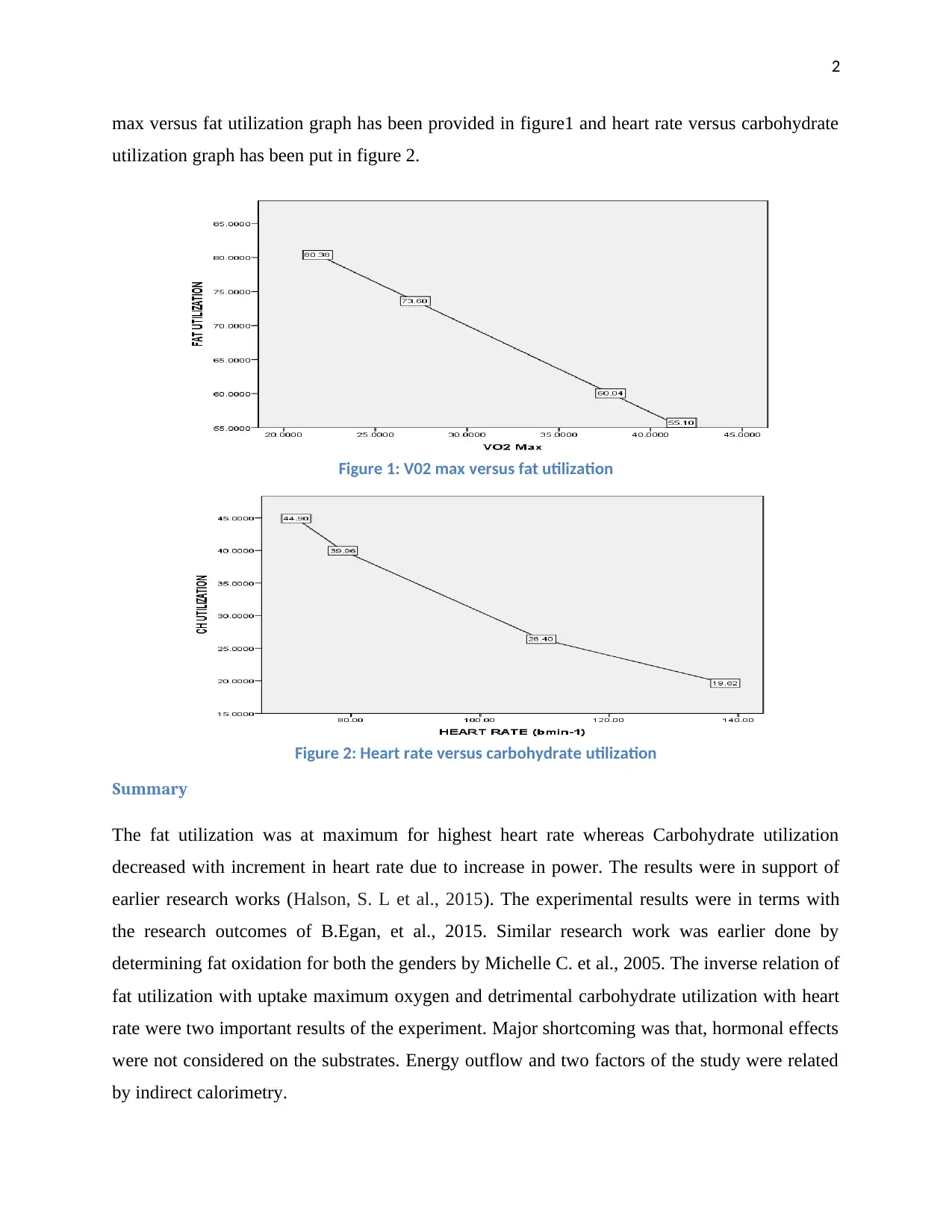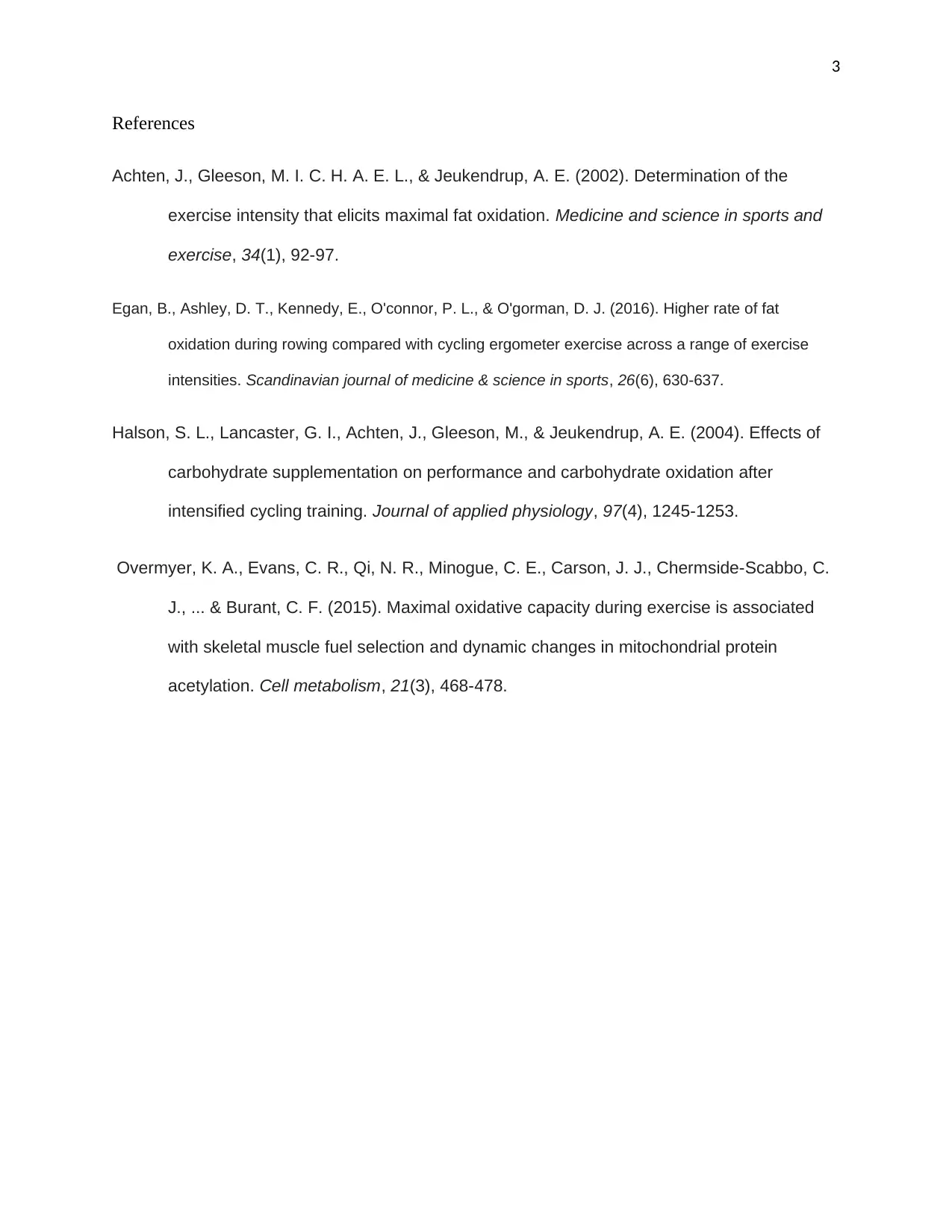DSES101 Introduction to Sport & Exercise Physiology: Lab Report
VerifiedAdded on 2023/06/12
|3
|825
|353
Report
AI Summary
This report investigates the utilization of fat and carbohydrates during incremental exercise, focusing on how these substrates are affected by increasing work power. Four healthy male participants underwent cycling on an ergometer with gradually increasing power outputs (60W, 90W, and 120W). Expired gases were collected to measure oxygen uptake (VO2) and carbon dioxide production, while heart rate was also monitored. The results indicated that fat utilization was maximal at higher heart rates, whereas carbohydrate utilization decreased with increasing heart rate and power. The findings align with previous research, highlighting the inverse relationship between fat utilization and maximal oxygen uptake, and the detrimental effect on carbohydrate utilization with increased heart rate. The study acknowledges a limitation in not considering hormonal effects on substrate utilization, with energy outflow and the two factors of the study related by indirect calorimetry. The report includes graphical representations of VO2 max versus fat utilization and heart rate versus carbohydrate utilization, supporting the analysis.
1 out of 3





![[object Object]](/_next/static/media/star-bottom.7253800d.svg)